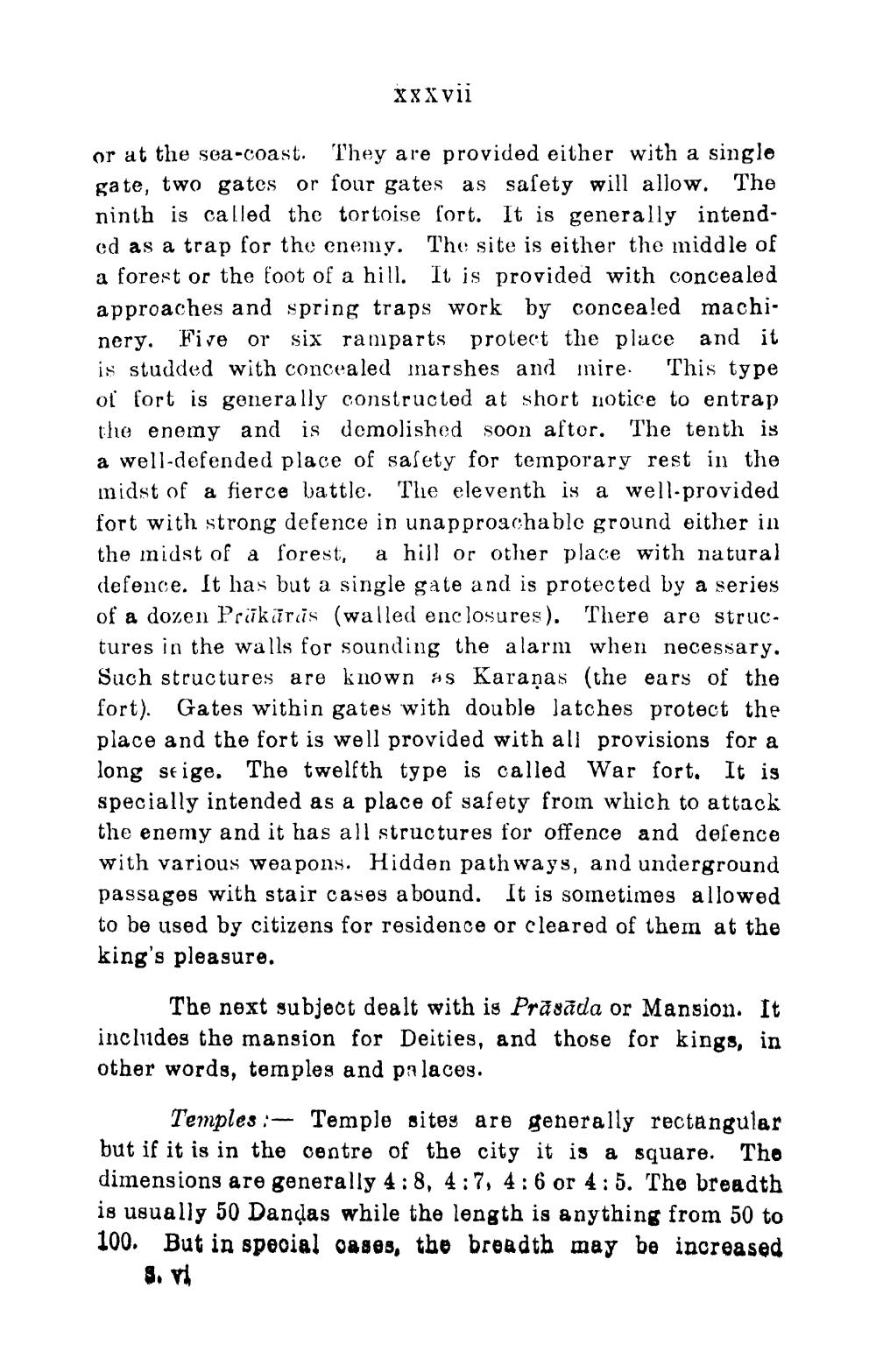________________
XXX vii
or at the sea-coast. They are provided either with a single gate, two gates or four gates as safety will allow. The ninth is called the tortoise fort. It is generally intended as a trap for the enemy. The site is either the middle of a forest or the foot of a hill. It is provided with concealed approaches and spring traps work by concealed machinery. Five or six ramparts protect the place and it is studded with concealed marshes and mire. This type of fort is generally constructed at short notice to entrap the enemy and is demolished soon aftor. The tenth is a well-defended place of safety for temporary rest in the midst of a fierce battle. The eleventh is a well-provided fort with strong defence in unapproachable ground either in the midst of a forest, a hill or other place with natural defence. It has but a single gate and is protected by a series of a dozen Prikürcis (walled enclosures). There are struc. tures in the walls for sounding the alarm when necessary. Such structures are known as Karanas (the ears of the fort). Gates within gates with double latches protect the place and the fort is well provided with all provisions for a long seige. The twelfth type is called War fort. It is specially intended as a place of safety from which to attack the enemy and it has all structures for offence and defence with various weapons. Hidden pathways, and underground passages with stair cases a bound. It is sometimes allowed to be used by citizens for residence or cleared of them at the king's pleasure.
The next subject dealt with is Prāsāda or Mansion. It includes the mansion for Deities, and those for kings, in other words, temples and palaces.
Temples : - Temple sites are generally rectangular but if it is in the centre of the city it is a square. Tho dimensions are generally 4:8, 4:7, 4:6 or 4:5. The breadth is usually 50 Dandas while the length is anything from 50 to 100. But in special cases, the broadth may be increased
S. VI




